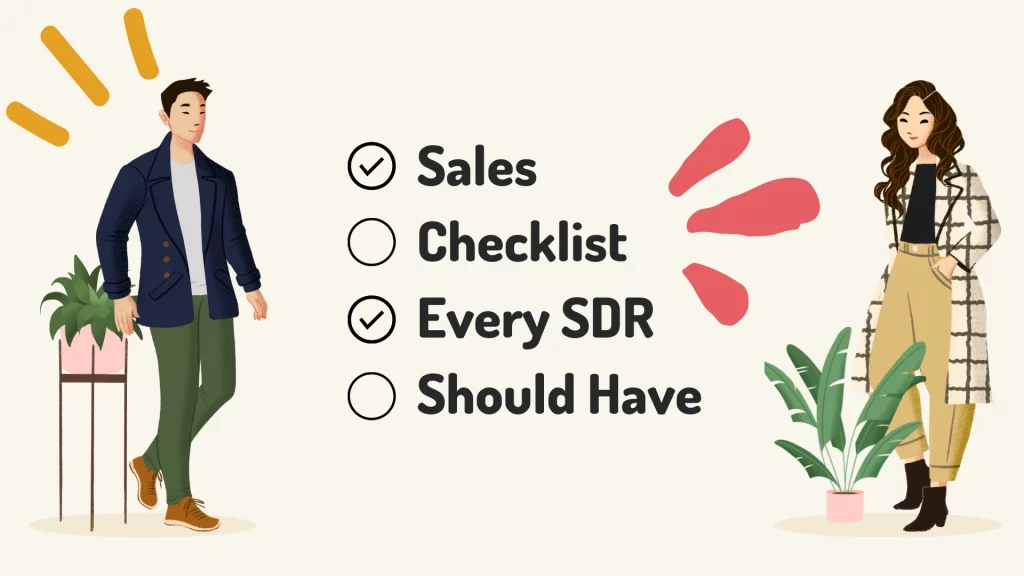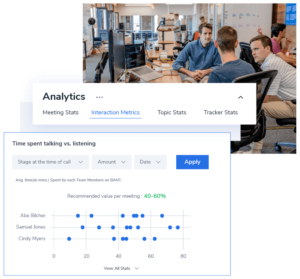Why Rafiki
Pricing


Pricing
Solutions

RevOps Leaders
Synchronize revenue generating functions

SDR Leaders
Get your team aligned and Coach your Reps 3x faster at scale

Sales Leaders
Unlock pipeline truth, drive confident forecasts

Here’s something interesting:
The average SDR (sales development representative) tackles 265 leads per month.
And SDRs who make 12 contact attempts instead of the average of 8 contact attempts perform 16% better!
The quality of the calls made by SDRs matters just as much as the number of leads handled or the number of contact attempts made.
There should be a process in place to ensure that SDRs ask smart questions during a call or have a strategy to qualify or disqualify a lead so that they hand high-quality leads to account executives (AE) to complete the sale.
SDRs don’t close deals--in most companies, their role involves:
Let’s start with a quick overview of sales calls and their types:
A sales call is a pre-arranged face-to-face meeting (or video call during COVID times) between an SDR and a prospect.
The goal: to make a sale.
What does the prospect expect - the SDR listens to them, gives them relevant information, gives them timely responses, and is invested in the success of their business.
The better the SDR is at actively providing value to the prospect, the better the sales call goes.
Sales calls can be categorized into four types:
SDRs call prospects without prior appointments and try to find out their pain points and requirements. Cold calls have an average success rate of 1-3%.
SDRs call prospects after initiating prior contact in the form of email campaigns, trade events, referrals, or meetings. Prospects are ready for the call, so the rate of conversion is higher than that of cold calls.
Sales reps (quota-carrying salespeople) and prospects have a business discussion about the offerings either on the phone or at a face-to-face meeting.
Hubspot’s 2021 Sales Enablement report found that 19% of buyers want to talk to a rep during the awareness stage of the buying process, 60% during the consideration stage, and 20% during the decision stage.
SDRs follow up with prospects to check their status on the customer journey towards their offerings. Service calls allow reps to nurture prospects.
Regular follow-up calls are important because 80% of sales require 5 follow-up calls and 60% of customers refuse sales requests before saying yes!
SDRs are the face of the company.
To be successful at setting up quality meetings and appointments, they must have a working knowledge of the prospect’s industry, an understanding of the sales process and the competition, and excellent communication skills.
Remember that people don’t want to be pressured into making a purchase, so develop a strategy to engage with the prospect and communicate the benefits of the product/service without being aggressive.
In the words of Tiffani Bova, Global Customer Growth and Innovation Evangelist at Salesforce,
“How you sell matters. What your process is matters. But how your customers feel when they engage with you matters more.”
Here are some tips to turn cold calls into warm ones:
Research your prospect before the sales call using social media platforms like LinkedIn or Twitter. Understand your prospect’s interests, likes, and dislikes through the information he/she shares publicly.
Read up on the latest market trends and news items in the relevant industry. Your prospect is looking for a well-informed SDR to help him/her find solutions, not a parrot repeating a fixed script.
Use the prospect’s name, mention information that you’ve found through LinkedIn, and indulge in some small talk. Be human! You’re more likely to build a connection with your prospect in this way rather than being purely business-like.
How to make a sales call that increases the likelihood of conversions?
Follow this checklist to ensure you have a sales call strategy that yields positive results, is repeatable, and can be easily learned.
Bear in mind that you shouldn’t have a set script for a sales call that you mindlessly repeat by making a few tweaks to slot in prospects’ names and other details. Instead, what you should have is a blueprint for engaging your prospects.

Don’t use the apologetic “Is this a good time to talk?” to begin your sales calls. This will undoubtedly set a negative tone for the conversation even before it starts. Instead, begin with a sunny “Hi Beth, How are you?” and state your reason for calling. You have the first 5 seconds of the call to buy yourself 5 more minutes of talk time. So make the best use of it.
Other powerful openings you can use:
It displays you in a bad light and makes people think you’re insecure, unprofessional, and desperate to make sales. If you must compare yourself to a competitor, stick to the facts and focus on the qualities that differentiate you from others.
Also, prepare well for objections as prospects are bound to have some. Learn to deal with things like “Can we talk after a week?,” “Sorry, I don’t have time now,” or “Why don’t you send a detailed email?” by asking relevant questions, demonstrating value, or trying to book an appointment.
Offer a genuine compliment to your prospect such as “It is a pleasure to do business with you,” and he/she will strive to match up to it. Being disingenuous will get you nowhere; it may even lose you the prospect.
You should have an agenda in mind to prevent the conversation from veering off into unwanted directions, save time, and achieve the outcome you need.
For instance, your agenda may look like this:
Mumbling, hesitating, appearing underconfident, or being unnecessarily apologetic makes it 40% less likely that the prospect will ask for a demo call.
If you are an existing Rafiki customer, then you can easily listen to your conversation to understand where you are going wrong. Also, Rafiki intelligently captures and displays negative-sounding comments or anxious responses in your call using the “patience” factor. This gives you an excellent opportunity to correct yourself in subsequent calls.

Too many options is a bad thing--it confuses the prospect thereby delaying decision-making. Focus on a few of the best features of your product/service instead of describing a laundry list of all the features. Talk about additional options only when the prospect isn’t satisfied with the ones you’ve presented.
Position your product/service as a solution that addresses your prospect’s problems to convince them to buy it. Understanding consumer behavior will help you close the call and book the demo meeting.
For instance, you could say, “We work with [customer type] in [industry] with [pain points/goals.] Our customers usually want to [reach goal/find solution]. Does this sound like you?”
Since you’ve prequalified your prospect through research and relevant questions, he or she will say yes.
Then you can say something like, “I’d like to know more about it” to encourage them to talk about themselves. This gives you information to build your pitch.
Don’t discount the power of emotions in influencing a purchasing decision. People are not convinced only on the basis of cold, hard facts--there’s often an emotional angle involved.
Try to discover the emotional trigger that will persuade your prospect to move forward -- sentimental attachment, nostalgia for the “good old days,” and so on.
Your goal in the sales call is to convince the prospect about the value of your product/service and book a meeting with an AE to take the sale forward.
Clearly communicate both the quantitative value and the emotional value of your offering.
When emotional triggers are not enough to push your prospect forward, articulate the quantitative benefits to convince him/her that the price is more than worth it.
Do not think, for even a minute, that you can trick or manipulate your prospect into purchasing your offering. It can backfire spectacularly and you can end up losing an entire revenue stream.
Instead, involve your prospect in the sales call, empowering him/her to find solutions but remember to guide him/her toward your value proposition.
HubSpot’s research shows that the best times to call prospects are 8 am - 9 am or 4 pm - 5 pm. Depending on your industry, the best time for you to call a prospect may be different. So do your research before you make your sales call.

Nowadays, there are plenty of business intelligence tools to help SDRs profile a prospect before calling and pull relevant data that they can to discover pain points and opportunities.
Rafiki captures intelligible insights from your sales call and organizes them in an easy-to-access manner. It also offers an instant analysis of your calls to help you track customer objections and pinpoint key topics that triggered the most conversations.
As a result, you’re able to overcome objections in real time while improving your offerings. You can also train or upskill based on key points in conversations.
When your prospect talks extensively about his/her issues, you know that you’re off to a good start. Listen carefully, make notes, and adapt your messaging to suit the prospect’s needs.
Listening well will show that you are empathetic toward your prospect and it will make the conversation memorable. It will also demonstrate value to the prospect, making it more likely that he/she will agree to book the next meeting or demo.
Selling does not come naturally to everybody but it’s a skill that can be learned. As an SDR, never stop upskilling yourself to improve your performance, and always strive to make prospects feel you are a trustworthy person.
Now that you have seen how to make a sales call that leads to greater conversions? It’s time to get into action and what better way to enhance your sales call experience than using Rafiki’s AI-driven revenue intelligence tool?
Contact us to book a demo today!